‘The concept of acid communism is a provocation and a promise. It is a joke of sorts, but one with very serious purpose. It points to something that, at one point, seemed inevitable, but which now appears impossible: the convergence of class consciousness, socialist-feminist consciousness-raising and psychedelic consciousness, the fusion of new social movements with a communist project, an unprecedented aestheticisation of everyday life.’ (Fisher and Colquhoun, 2020, pp. 22-23)
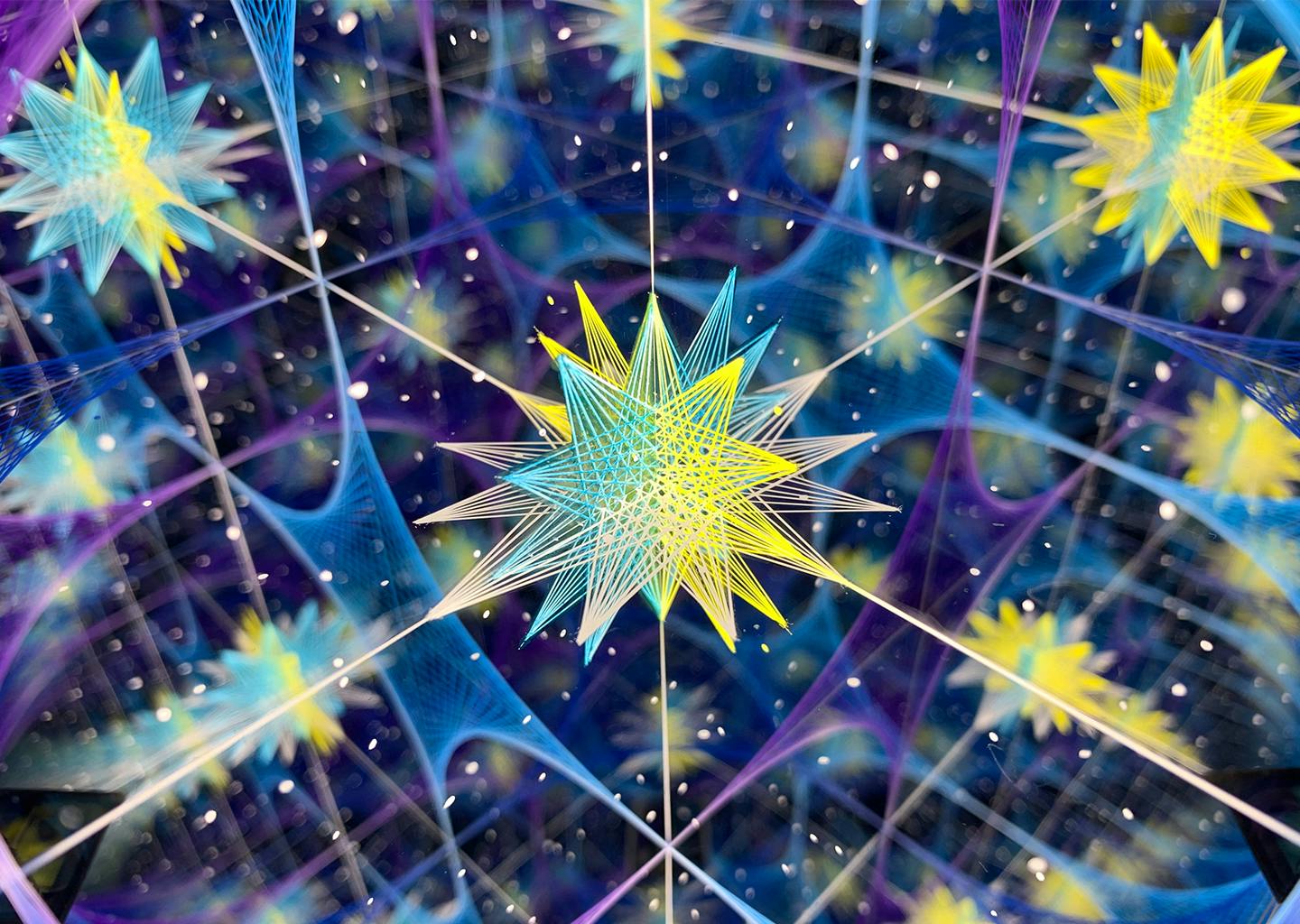
Although Fisher used the term “acid” more with a connection to corrosiveness, and the main focus of his text lies outside analysing the psychedelic experience itself, he recognised that acid (in the lysergic sense) has immense potential in this political fusion.
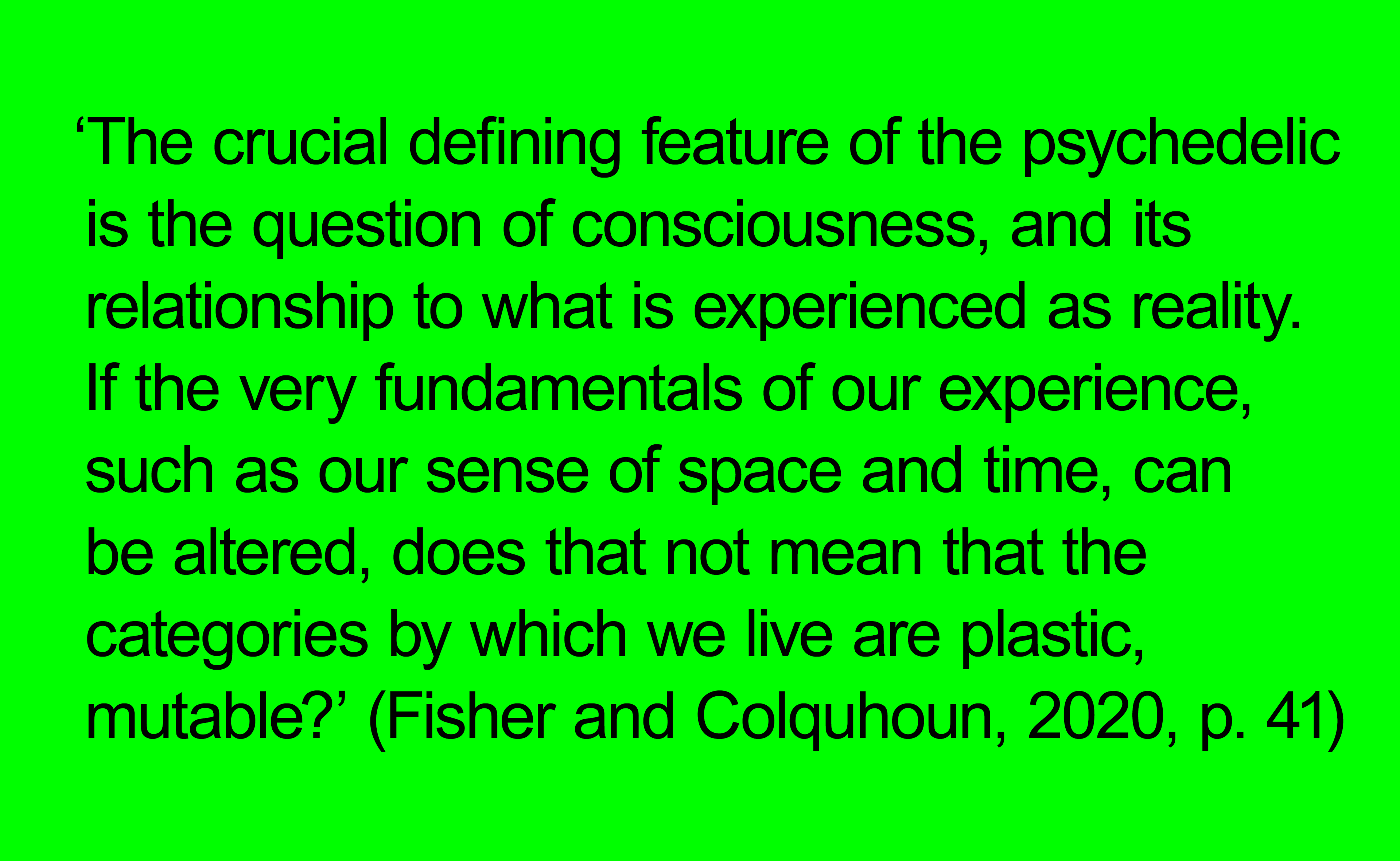
Through expanding on this aspect of Acid Communism, we can get closer to mapping potential continuities to Fisher’s work, and how it might’ve impacted the contemporary.
(Relativity)
One key aspect to the experience of psychedelic substances is the – at least partial – erosion of a defined, objective reality. Rationally, it is straightforward to comprehend the concept of relativity caused by our subjective experiences and place in a lineage of events, however experientially we are rarely confronted with any severe manifestation of this.
The LSD experience quite radically unveils this experiential layer, not only through perceiving input differently to those not under the influence, but also to our own everyday viewpoint. This “living of” relativity opens doors to the type of plasticity Fisher alludes to. As he hints, it can reveal that every type of knowledge, cultural belief and actions conducted are defined by historic and present day lineages, conditions and environments. Concepts one takes for granted are questioned.
This is particularly capable in combating ideology, as leaving the vantage point of cultural and political conditioning aids in seeing how most ideology fail to coherently fit together. Such an experience, given a political and economic framing, could reveal neoliberal notions of freedom, ideas of competition and self-interest, as not a naturally emergent state, but something very much constructed for a specific purpose.
(Time)
An instrumental part of relativity in the context of LSD is the perception of time.
The neoliberal project relies heavily on an incoherent manipulation of time, for example, both a freezing of, and nostalgia for the emergence of its ideology, the 1980s – culturally and economically too. The latter is manifested in a continuous throwback to Thatcherite policies – deregulation, small government, low corporation tax –, while simultaneously pretending its subsequent failures did not happen. Anything post-1980s is to be erased from the collective memory.
Culturally too, a revival and fascination with “Future Nostalgia”, cyberpunk and 80s motifs try to keep alive a time long gone. The connection between 80s throwback music and neoliberalism might seem far fetched at first. But as Fisher too pointed out, the fascination with begone eras and retro is not a progressive artistic expression of our age, but a lack of innovation. As a result of the removal of safety nets society used to provide to artists, work outside the homogeneity of market structures and what’s already been done is scarce. It’s too financially risky to try something totally new: people can’t afford to experiment.
The way an LSD experience responds to this, is by a disruption of the linearity and the cultural manipulation of time. If one can experience time advancing faster, slower, and abandoning its linearity altogether, then the time vacuum of neoliberal culture and economics is exposed as merely one way of structuring the contemporary.
Another time-based, disruptive aspect of LSD is the very time allocated to, and spent on the trip. 12 hours on a non-monetisable activity goes against the self-imposed entrepreneurism and forced productivity of the current economic system. (Although this aspect too is actively under assault and is attempted to be coopted into productive mechanisms, evidenced by the surge in popularity of micro-dosing.)
(Aestheticisation)
The visual facets of acid, the ‘aestheticisation of everyday life’ as Fisher put it, requires attention too. Most of us are being exposed to more and more images daily, and many young people are growing up as image-native readers. Corporate interest realised early the potential of visual spectacles in exploiting people’s desires, which are increasingly aesthetically-oriented.
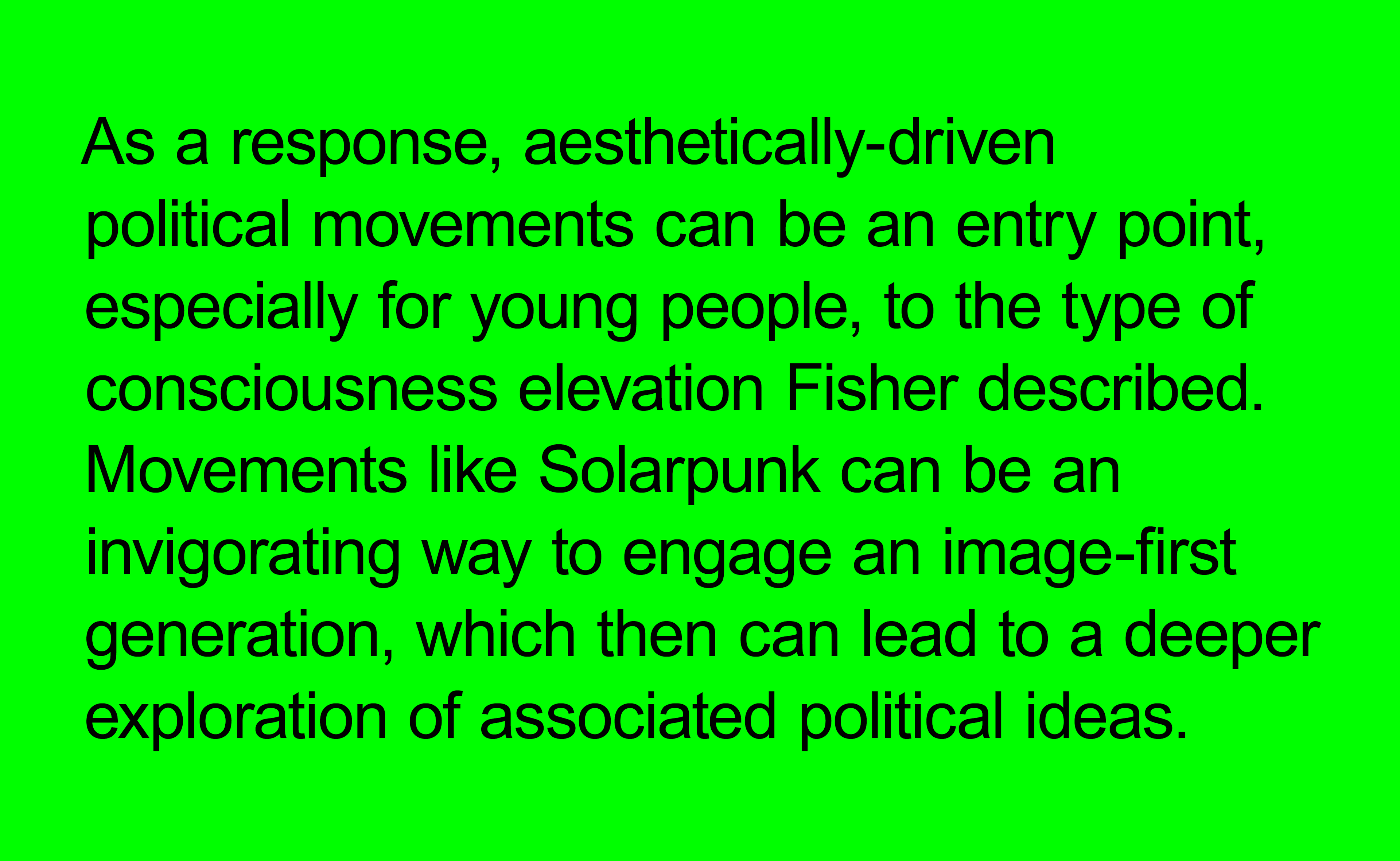
The sun-kissed, renewable-fuelled, green and luscious fusion of high- and nature-tech cities, landscapes and communities of the Solarpunk movement elicit an alternative to the grey and monotonous urban-living a lot of us are finding ourselves in. Images of fresh, quality produce, and a saturation of green spaces are instantly invigorating. This energy in imagination can then lead to political and economic engagement with energy policies, modes of production, and an exploration of the challenges in achieving such aspirations.
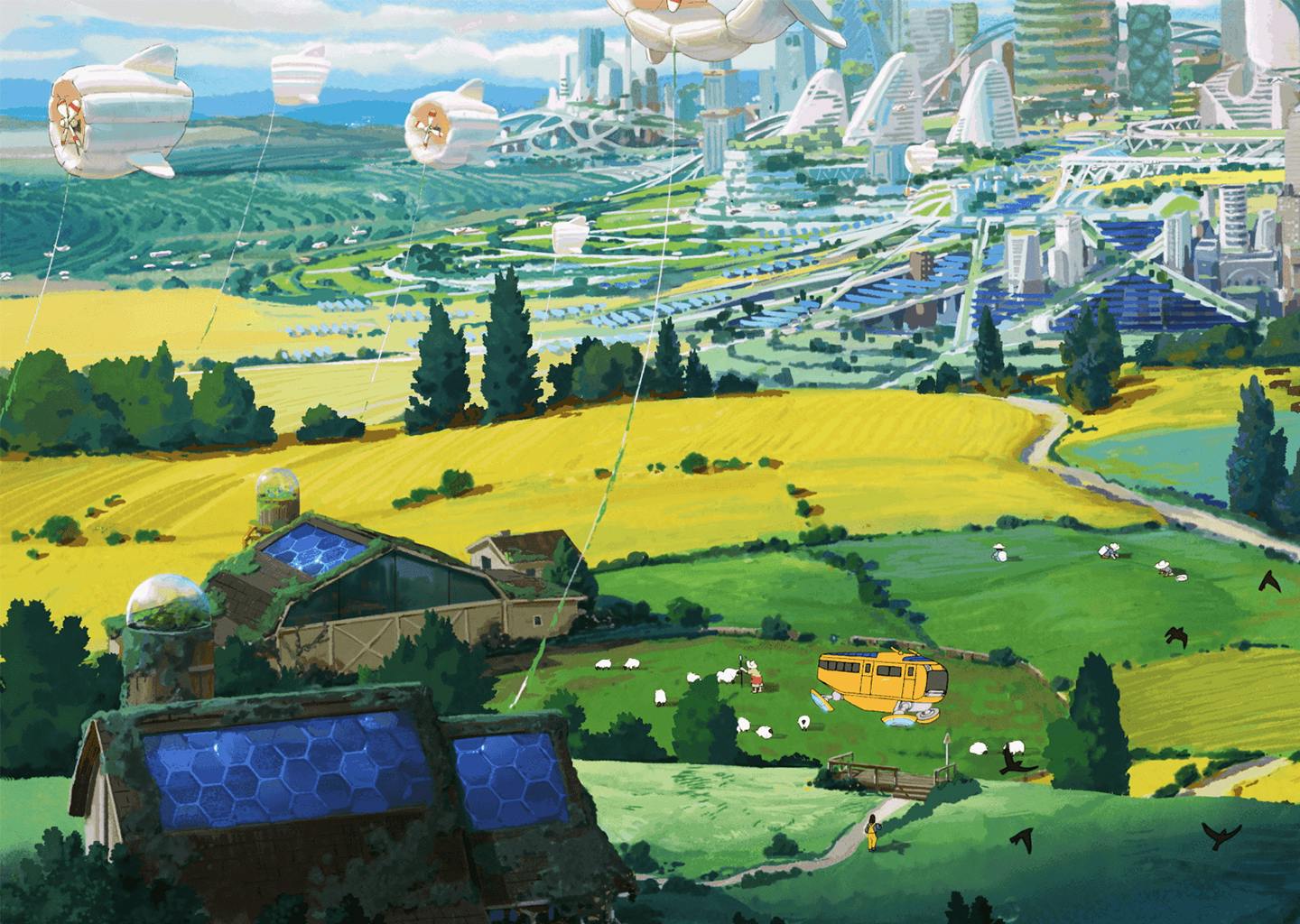
The danger of course, as with 60s counterculture, is the commodification of these ideas through a reduction to merely aesthetics, neutralising their radicaility. Perhaps even more dangerous, as with Cyberpunk, even a bleak and catastrophic narrative can be perversely allusive when reduced to “a look”, making it appear desirable.
Although Fisher in his text focused primarily on specific political events and cultural artefacts, I believe he considered the “acid” in Acid Communism serious enough to recognise its key role in disentangling pervasive market forces that invade and monetise our most private and intimate everyday experiences.
While I’m not advocating for individual or mass use of psychedelic substances, like many other contemporary responses to Mark’s work, I consider the role of psychedelics substantial, and in the right context, progressive in advancing towards a post-capitalist future.
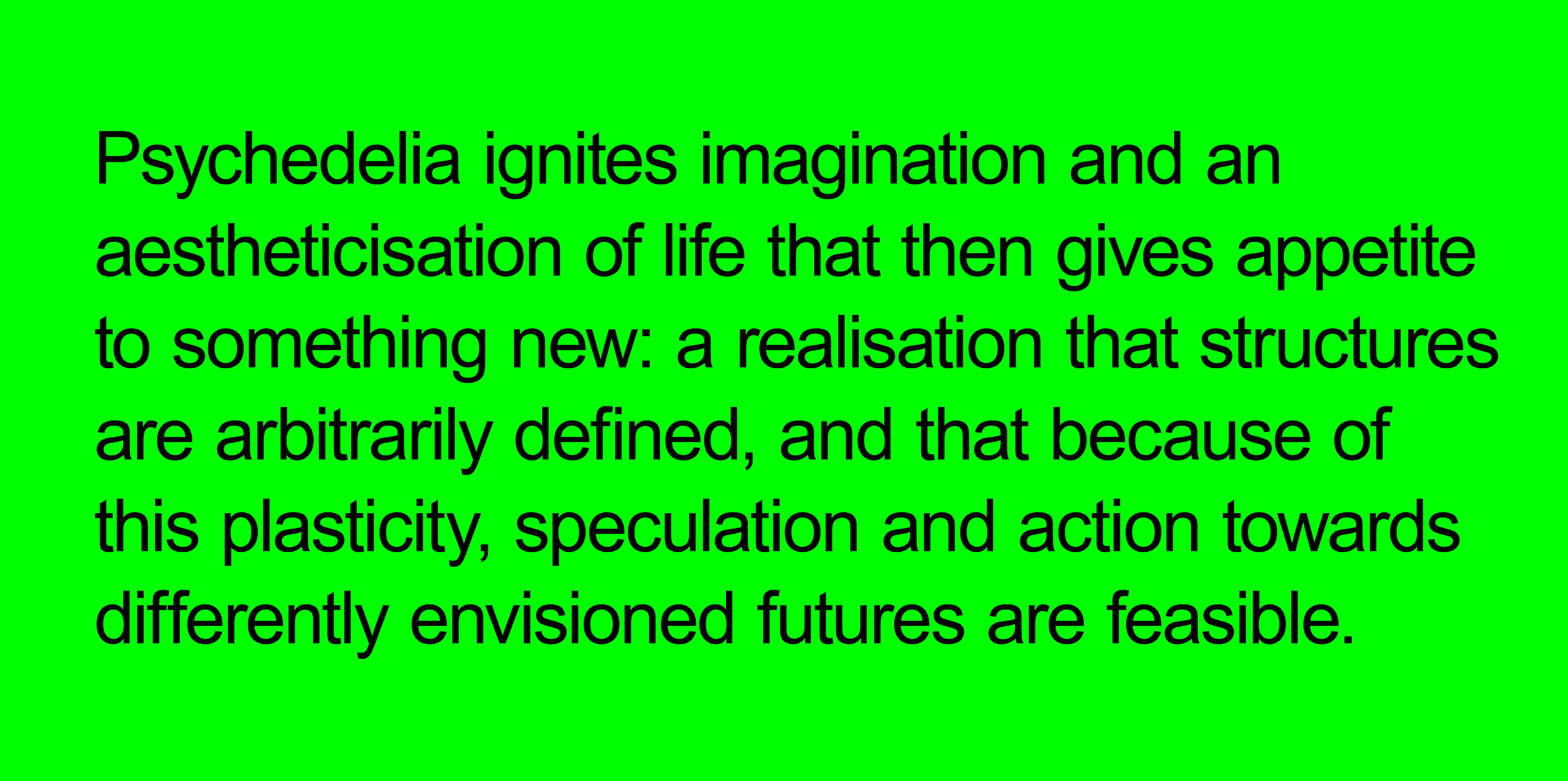
References:
Fisher, M. and Colquhoun, M. (2020). Acid Communism. [Unknown]: Pattern Books.
Second image credit:
The Line, 2021. Dear Alice. Available at: youtube.com/watch?v=z-Ng5ZvrDm4. Accessed 4 September 2022.